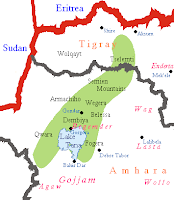A debate over the exact method of conception/gestation was explained in De Secreta mulierum, "Of the Secrets of Women":
Note that there is a controversy between medical authorities and philosophers, for philosophers say that the male seed has the same relationship to the female menses as an artificer does to his work. For just as a carpenter alone is the efficient cause, and the house is the effect, in that he alters and disposes the matter of the house, so the male seed alters the female menses into the form of a human being. ...
The medical authorities say the opposite, however, because man is made from the most noble material, and thus the male seed must enter the fetus materially, because the female menses is a superfluity of the second digestion and the male seed is better cooked and digested. Therefore it is necessary that it enter into the matter and substance of the fetus, for it is seen that sometimes the fetus resembles the father in genitals and in other ways, and this would be impossible if sperm were not incorporated materially. [translation by Helen Rodnite Lemay]
So philosophers (mostly male) believed that the male's seed is in the role of an artist and shapes the baby using material found inside the mother. Those who make a more clinical study of the human body were coming from what they observe of other creatures' life cycles, and believed that both bodies produced an amalgam that could become male or female. In other words:
The doctors say further that in the male seed there is a certain generating spirit which penetrates the entire seminal mass, and this spirit has the power to form all members. Just as a smith fashions iron with a hammer, this spirit disposes and softens all the members, and it is this spirit that is the efficient principle.
The philosophers, on the other hand, state that the male seed exudes as a vapor, for the womb is exceedingly porous and after the formation of the fetus the heat of the sun causes the male seed to evaporate and to leave the womb through the pores. It is evident that the womb is porous because the child receives nourishment through the pores.
I don't know what they thought the umbilical cord was for. I find references to clamping and cutting it, but not any theories as to why it existed. But here we have competing theories as to how the baby is conceived. The next question is how exactly does that small event produce a fully-formed human? Tomorrow we'll look at the chapter of the Secreta that deals with the formation of the fetus over time. See you soon.
(The illustration is actually the birth of Moses from the 14th-century Queen Mary psalter.)












.jpg)












.jpg)

